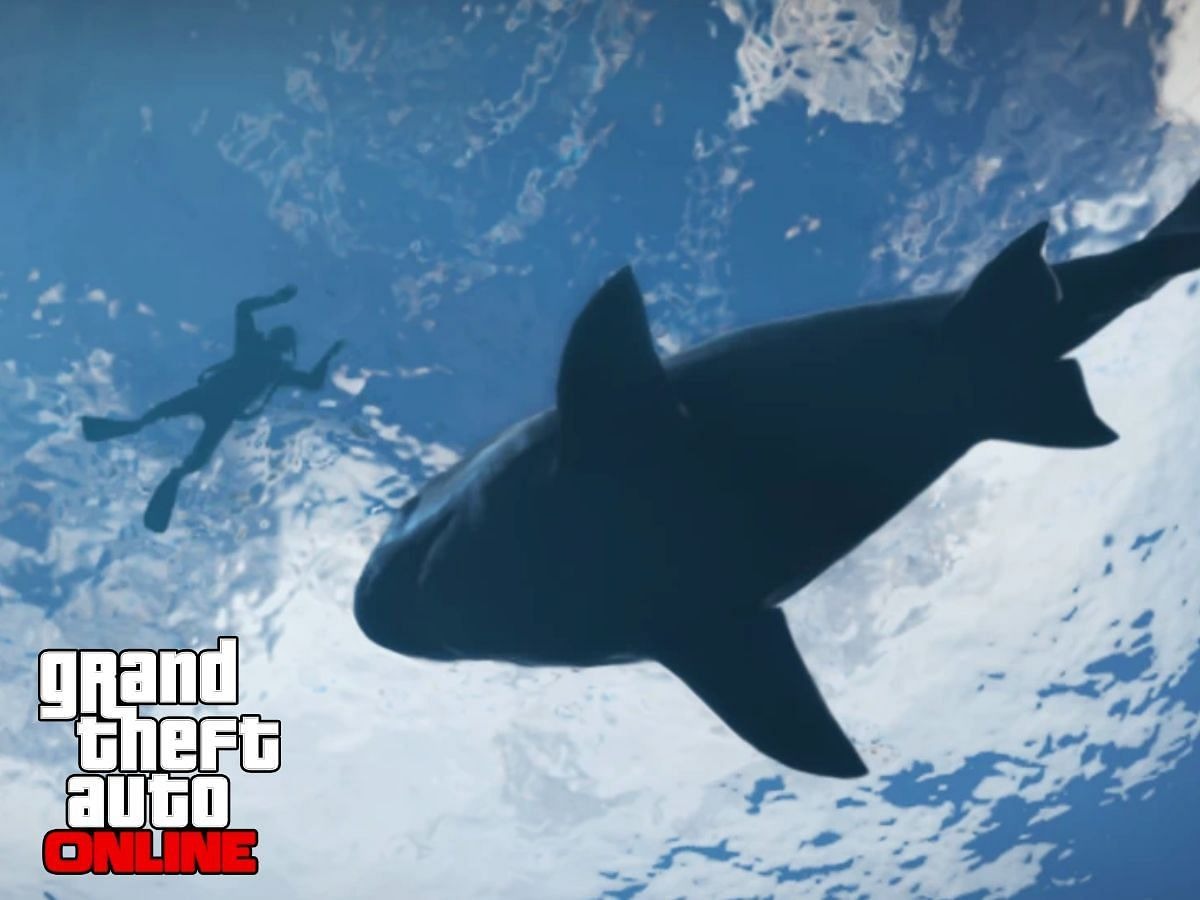Grand Theft Auto V: Premium Edition & Great White Shark Card Bundle
The Grand Theft Auto V: Premium Edition & Great White Shark Card Bundle includes the full Grand Theft Auto Online (GTA V 5): Great White Shark story, free access to the always-changing Grand Theft Auto Online, and all existing gameplay upgrades and content, such as The Cayo Perico Heist, The Diamond Casino & Resort, The Diamond Casino Heist, Gunrunning, and much more. You’ll also get the Criminal Enterprise Starter Pack, the fastest way to get your criminal business going in Grand Theft Auto Online. You’ll also get a Great White Shark Cash Card worth $1,500,000 in-game GTA dollars to spend in GTA Online.
Grand Theft Auto Online (GTA V 5): Great White Shark Features
The Great White Shark is a microtransaction in Grand Theft Auto Online (GTA V 5) that gives players $1,500,000 in-game cash. This can be used to buy several things, such as:
- Vehicles
- Properties
- Weapons
- Clothing
- Tattoos
- Other items
Main Features:
The main thing about the Great White Shark Cash Card is that it lets GTA Online players skip the hard work of making money. This can be especially helpful for new players who are just starting and want to get better tools and cars.
The Great White Shark Cash Card can also be used to buy things you can’t get any other way, like some of the game’s more expensive homes and cars.
How to Use Grand Theft Auto Online (GTA V 5): Great White Shark
To use the Great White Shark Cash Card, you need to buy it from the in-game store and put the money into your character’s bank account. The money will be ready for you to spend right away.
Tips:
If you are thinking about buying a Great White Shark Cash Card, here are some things to keep in mind:
- Before buying something, consider what you want to use the money for. This will help you avoid buying things on the spur of the moment.
- You should know that the Great White Shark Cash Card is a microtransaction, so you don’t have to buy it to play the game.
- If you aren’t sure if you want to buy the Great White Shark Cash Card, you can always play the game for a while and save money before deciding. This will help you figure out what you need and what you’d like to buy.

Grand Theft Auto Online (GTA V 5): Great White Shark Modes and Missions
The Grand Theft Auto Online ( GTA V 5): Great White Shark Cash Card is a form of in-game cash that can be used to buy anything in GTA Online, including cars, houses, guns, clothes, and more. It can also be used to start companies, buy improvements, and pay for other things.
The Great White Shark Cash Card has no specific games or tasks. However, players can use the money to buy cars, weapons, and other things that might help them finish certain tasks or goals.
Characters
The Great White Shark Cash Card has nothing to do with specific people. But players can buy clothes and other items for their figures with the money.
Pros and Cons
Pros:
- You can buy anything in GTA Online with a Great White Shark Cash Card, including cars, houses, guns, and clothes.
- It can also be used to start companies, buy improvements, and pay for other things.
- This can give players a big edge in the game because they will have better tools and materials.
Cons:
- The Great White Shark Cash Card is pretty pricey compared to how much money you can earn in-game.
- Some players might think that using real money to buy in-game money is unfair or gives those who can afford it an unfair edge.
The Great White Shark Cash Card can help GTA Online players move through the game quickly. But it’s important to remember that you don’t have to buy a card to play the game.

Additional Notes
- The Great White Shark Cash Card is worth $1,500,000 in-game GTA cash.
- You can buy it at the Rockstar Games Store or several other stores.
- The card can be used on a PC, a PS4, a PS5, an Xbox One, or an Xbox Series X/S.
What’s New In Grand Theft Auto Online (GTA V 5): Great White Shark?
The Cayo Perico Heist update added the Great White Shark as a new type of shark to GTA Online. It is the game’s biggest and most aggressive shark, and you can find it in the deep seas around Cayo Perico.
The Great White Shark is a dangerous hunter that will attack players as soon as it sees them. It is very hard to kill, and it can take multiple shots from a powerful weapon to kill it.
System Requirements
Minimum:
- CPU: Intel Core 2 Quad CPU Q6600 @ 2.40GHz (4 CPUs) / AMD Phenom 9850 Quad-Core Processor (4 CPUs) @ 2.50GHz
- RAM: 4 GB
- Video Card: NVIDIA 9800 GT 1GB / AMD HD 4870 1GB
- Sound Card: 100% DirectX 10 compatible
- HDD Space: 65 GB
Recommended:
- CPU: Intel Core i5 3470 @ 3.20GHz (4 CPUs) / AMD X8 FX-8350 4.0GHz (8 CPUs)
- RAM: 8 GB
- Video Card: NVIDIA GTX 660 2GB / AMD HD 7870 2GB
- Sound Card: 100% DirectX 10 compatible
- HDD Space: 65 GB
FAQs
- Q: How do I find a Great White Shark?
A: You can find Great White Sharks in the deep water near Cayo Perico. To find one, swim in the water until your mini-map is all dark blue. Then, look for a red dot on your radar. The shark is there! - Q: How do I get rid of a Great White Shark?
A: It’s very hard to kill a Great White Shark. Use many power tools, like a sniper gun or rocket launcher. Aim for the head of the shark and be ready to fire more than one shot. - Q: What do I get if I kill a Great White Shark? A: Killing a Great White Shark doesn’t get you anything. But players will get money and RP if they kill any animal in the game.
- Q: Can I have a Great White Shark as a pet?
A: No, Great White Sharks can’t be kept as pets. Great White Sharks are dangerous animals that won’t follow players or do what they tell them to do.
How to install the Great White Shark Card in GTA Online:
- You can buy the Great White Shark Card from the PlayStation Store, the Xbox Games Store, or the Rockstar Games Launcher.
- Launch GTA Online once you have bought the Shark Card.
- Press the Start button on your controller while in Freemode to bring up the pause screen.
- Click Online, then Inventory.
- Choose the page called “Shark Cards.”
- Select the Great White Shark Card and press the A button on your keyboard to use it.
In the End:
Once you redeem the Great White Shark Card, you will be awarded $1,500,000 in GTA Online currency. You can use this money to purchase various items, including vehicles, properties, weapons, and clothing.
